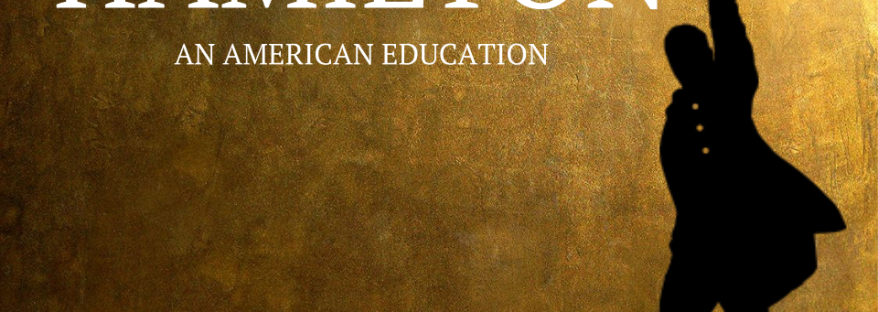Context: I teach 7th grade science, and history is my least favorite subject. My background knowledge is lacking in both US and world history, unless it directly pertains to science. I had incredible history teachers in middle school, and sub-par history teachers in high school. In so many ways, the teacher makes the subject come alive!
Last week, I was chatting with one of our amazing US History teachers, Daniel Garcia. I asked him what they were teaching. Turns out, they were learning about Hamilton v Jefferson. Did you just say…Hamilton?! Ok, I’m interested. Why? Because Hamilton, duh.
| Mr. Garcia going over the day’s objective. |
They were analyzing primary and secondary source documents from both Jefferson and Hamilton, and discussing the merits and faults. I ended up in Mr. Garcia’s class for most of period 2 on Tuesday, and the end of period 4 and beginning of period 6 on Thursday. On Tuesday, they listened to the intro song, Alexander Hamilton, and analyzed Hamilton’s background (tangent conversation, what do you notice about the actors?). On Thursday, they listened to Cabinet Battle #1 and Cabinet Battle #2. If the kids weren’t interested in Hamilton after Tuesday, they were begging for more after these 2 songs!
At one point during 4th period, I usurped power from Mr. Garcia to ask the kids “How do you think the Jefferson v Hamilton battle would have been different if it were via social media? And what are their hashtags?” That got them exciting and talking!
Ok, so Hamilton is exciting and popular. Awesome. Wow. But so what?
I’ve seen many of our usually disengaged students perk up with Hamilton. They love the lyrics, the hip hop, the angst, and that this is something cool outside of school. I stood in line outside Mr. Garcia’s class (ok, so really, it started as a game of “how long can I blend in before he notices”) and had a great conversation about women’s rights and the 2016 election with some of my former students.
For other students, using music to learn instantly makes learning come alive. On Friday, I did a circle with my 0 period AVID 8th graders to discuss using music in class. I started the period with 3 warm-up questions, (1) Make a hashtag for Jefferson, (2) Make a hashtag for Hamilton, and (3) Were you in the room where it happened? #3 got them super confused and curious. Only one student in my class understood the reference, and was cracking up. Everyone else kept asking “Ms. V, what does #3 mean?” I asked them to get in their circle, and before I threw out the question, they were already in a heated debate about Hamilton v Jefferson. For 15 minutes, they continued an intense conversation about the two and their ideas, using evidence from what they learned in history. Mind you, this was 7:30am.
| Cabinet Battle #1 with US History |
Finally, the conversation died down, and we moved on to discuss how Hamilton and other music fuels their interest in a topic. Overall, they agreed that authentic music experiences help them learn (such as Hamilton, Flocabulary, etc.).
For me, music and musicals are an instant hook. Cats was my broadway musical gateway drug in 4th grade. My dad and I read Old Possum’s Book of Practical Cats together when I was on a poetry kick, then watched the musical. I moved on to Les Mis, Hairspray, and Rent. For all of these, I took time to research the issues and people behind the musicals.
I love that my students have found something relevant to ignite their passion for learning!











